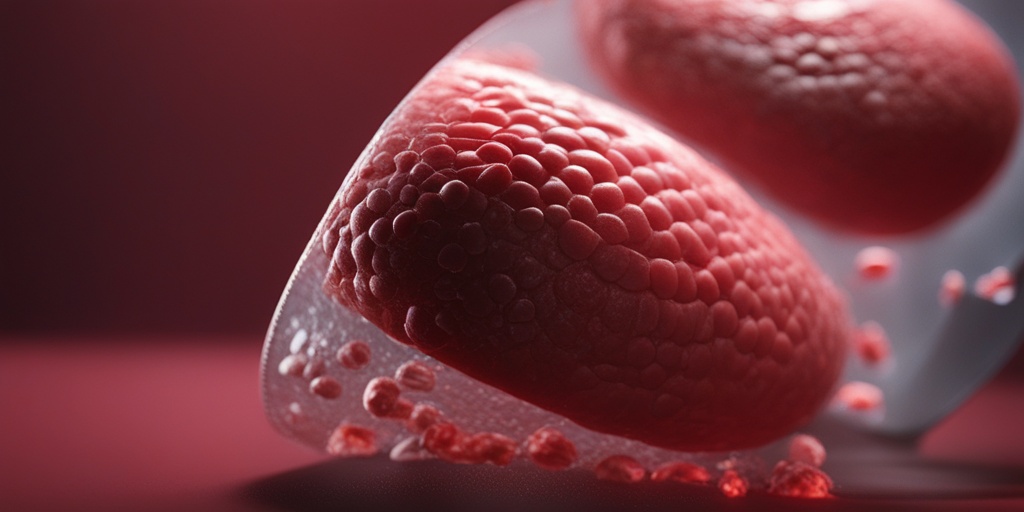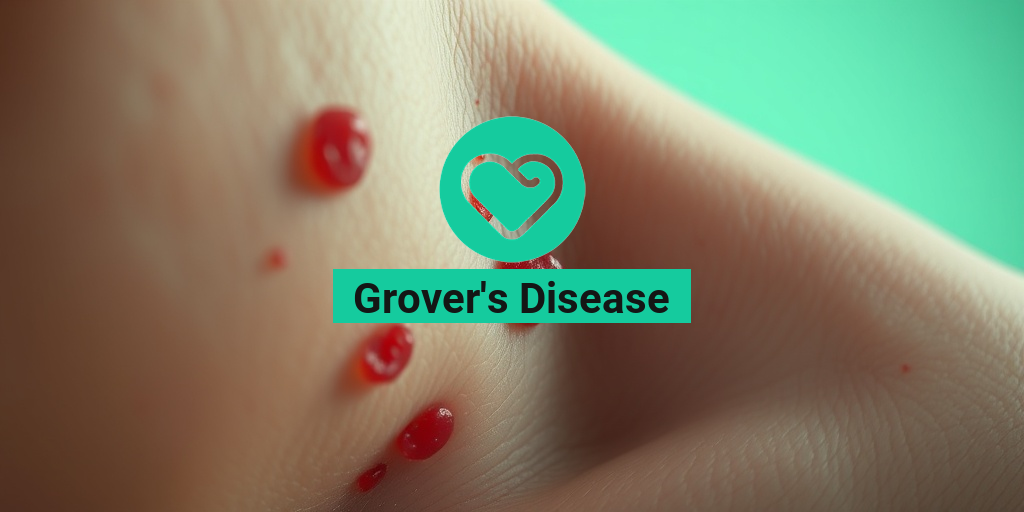What Is Graft versus Host Disease?
Graft versus host disease (GVHD) is a life-threatening complication that can occur after a bone marrow or stem cell transplant. It happens when the donated bone marrow or stem cells (the graft) view the recipient’s body (the host) as foreign and attack it. This can lead to a range of symptoms, from mild to severe, and can affect various parts of the body, including the skin, liver, and gastrointestinal tract.
GVHD is a major complication of allogenic transplants, which involve receiving cells from a donor. The risk of GVHD is higher when the donor and recipient are not closely matched, and it can occur even when the donor and recipient are related.
Symptoms of Graft versus Host Disease
The symptoms of GVHD can vary depending on the severity of the condition and the organs affected. Common symptoms include:
- Skin rash or jaundice, which can range from mild to severe
- Diarrhea or abdominal pain, which can lead to dehydration and electrolyte imbalances
- Liver dysfunction, which can cause jaundice, fatigue, and loss of appetite
- Fatigue, weakness, and loss of appetite, which can lead to malnutrition and weight loss
In severe cases, GVHD can lead to life-threatening complications, such as sepsis, organ failure, and death.
Understanding the Graft versus Host Reaction
The graft versus host reaction is a complex process that involves the interaction between the donated cells and the recipient’s immune system. When the donated cells recognize the recipient’s body as foreign, they activate an immune response, which can lead to GVHD.
The graft versus host reaction involves three main steps:
Step 1: Activation of Donor T-Cells
The donated T-cells recognize the recipient’s body as foreign and become activated, leading to the production of cytokines and chemokines that attract more immune cells to the site of the reaction.
Step 2: Inflammation and Tissue Damage
The activated T-cells and other immune cells cause inflammation and tissue damage in the recipient’s body, leading to the symptoms of GVHD.
Step 3: Regulation of the Immune Response
The immune system tries to regulate the graft versus host reaction by producing anti-inflammatory cytokines and activating regulatory T-cells, which can help to reduce the severity of GVHD.
Understanding the graft versus host reaction is crucial for developing effective strategies to prevent and treat GVHD. Researchers are exploring new approaches, such as immunotherapy and gene editing, to reduce the risk of GVHD and improve outcomes for transplant patients.
If you or a loved one is undergoing a bone marrow or stem cell transplant, it’s essential to be aware of the risks of GVHD and to discuss any concerns with your healthcare provider. You can also explore online resources, such as Yesil Health AI (yesilhealth.com), for evidence-based information on GVHD and other health topics. 🏥💻

Graft versus Host Disease Symptoms
Graft versus host disease (GVHD) is a serious complication that can occur after a bone marrow or stem cell transplant. It happens when the donated cells (the graft) view the recipient’s body (the host) as foreign and attack it. This can lead to a range of symptoms, which can vary in severity and impact different parts of the body.
Common Symptoms of Graft versus Host Disease
The symptoms of GVHD can appear within days, weeks, or even months after the transplant. Some common symptoms include:
- Skin rash or itching: A skin rash is one of the most common symptoms of GVHD. It can appear as a red, itchy, and blotchy rash, often on the palms of the hands, soles of the feet, and face.
- Diarrhea or abdominal pain: GVHD can cause inflammation in the digestive tract, leading to diarrhea, abdominal pain, and weight loss.
- Fatigue: People with GVHD often experience extreme fatigue, which can make it difficult to perform daily activities.
- Liver dysfunction: GVHD can cause liver damage, leading to elevated liver enzymes, jaundice, and other liver-related problems.
- Eye problems: GVHD can cause dry eyes, blurred vision, and eye pain.
- Mouth sores: Mouth sores, dry mouth, and difficulty swallowing are common symptoms of GVHD.
- Joint pain or muscle weakness: GVHD can cause joint pain, muscle weakness, and stiffness.
Other Possible Symptoms of Graft versus Host Disease
In addition to these common symptoms, GVHD can also cause:
- Respiratory problems: GVHD can cause pneumonia, bronchitis, and other respiratory infections.
- Neurological problems: GVHD can cause seizures, tremors, and other neurological symptoms.
- Cardiovascular problems: GVHD can increase the risk of cardiovascular disease, including heart failure and stroke.
Acute Graft versus Host Disease
Acute GVHD is a severe and potentially life-threatening form of GVHD that occurs within the first 100 days after a transplant. It is characterized by a rapid onset of symptoms, which can progress quickly if left untreated.
Risk Factors for Acute Graft versus Host Disease
Certain factors can increase the risk of developing acute GVHD, including:
- HLA mismatch: When the donor’s human leukocyte antigen (HLA) does not match the recipient’s HLA, the risk of GVHD increases.
- Older age: Older recipients are more likely to develop acute GVHD.
- Previous chemotherapy or radiation: Recipients who have received previous chemotherapy or radiation therapy are at a higher risk of developing acute GVHD.
- Donor-recipient sex mismatch: When the donor and recipient are of different sexes, the risk of GVHD increases.
Early detection and treatment of acute GVHD are crucial to prevent serious complications and improve outcomes. If you or a loved one has undergone a bone marrow or stem cell transplant, it’s essential to be aware of the symptoms of GVHD and seek medical attention immediately if they occur. 💊

Chronic Graft versus Host Disease
Imagine receiving a life-saving bone marrow transplant, only to face a new set of challenges as your body struggles to accept the donated cells. This is the reality for many patients who develop chronic graft versus host disease (GVHD), a serious complication that can occur after a transplant.
What is Chronic GVHD?
Chronic GVHD is a type of graft versus host disease that occurs when the donated bone marrow or stem cells view the recipient’s body as foreign and attack it. This can happen even if the donor and recipient are closely matched. Chronic GVHD typically develops 3-12 months after the transplant and can last for months or even years.
Symptoms of Chronic GVHD can vary widely, but may include:
- Skin rash or thickening
- Dry mouth and eyes
- Fatigue
- Weight loss
- Diarrhea or abdominal pain
- Liver dysfunction
- Lung problems
Chronic GVHD can be debilitating and affect multiple organs, making it essential to seek medical attention if you experience any of these symptoms.
Graft versus Host Disease Causes and Risk Factors
So, what triggers graft versus host disease? Let’s dive into the causes and risk factors behind this complex condition.
What Causes GVHD?
The primary cause of GVHD is a mismatch between the donor’s and recipient’s immune systems. When the donated cells recognize the recipient’s body as foreign, they launch an immune response, attacking the recipient’s tissues and organs.
This mismatch can occur due to differences in human leukocyte antigens (HLA), which are proteins on the surface of cells that help the immune system distinguish between the body’s own cells and foreign substances.
Risk Factors for GVHD
Certain factors can increase the risk of developing GVHD, including:
- HLA mismatch between the donor and recipient
- Older age of the recipient
- Previous history of GVHD
- Use of unrelated or mismatched donors
- Higher doses of chemotherapy or radiation before the transplant
- Presence of underlying medical conditions, such as infections or liver disease
Understanding the causes and risk factors of GVHD is crucial for developing effective prevention and treatment strategies. By recognizing the signs and symptoms of GVHD, patients and healthcare providers can work together to manage this complex condition and improve outcomes.

Graft versus Host Disease Diagnosis
Graft versus host disease (GVHD) is a life-threatening complication that can occur after a bone marrow or stem cell transplant. It happens when the donated cells (graft) view the recipient’s body (host) as foreign and attack it. Diagnosing GVHD can be challenging, but it’s crucial to identify it early to start treatment and prevent severe complications.
Symptoms of Graft versus Host Disease
The symptoms of GVHD can vary depending on the severity of the condition and the organs affected. Common symptoms include:
- Skin rash or lesions: A skin rash or lesions are the most common symptoms of GVHD. The rash can appear anywhere on the body and may be itchy, painful, or blistered.
- Digestive problems: GVHD can cause diarrhea, abdominal pain, nausea, and vomiting.
- Liver dysfunction: GVHD can lead to liver damage, causing jaundice, dark urine, and fatigue.
- Fatigue and weakness: GVHD can cause extreme fatigue, weakness, and a general feeling of being unwell.
Diagnosis of Graft versus Host Disease
Diagnosing GVHD typically involves a combination of physical examination, medical history, and laboratory tests. These may include:
- Biopsy: A skin or liver biopsy can help confirm the diagnosis of GVHD.
- Imaging tests: Imaging tests such as X-rays, CT scans, or MRI scans can help identify organ damage.
- Lab tests: Blood tests can help identify elevated liver enzymes, bilirubin levels, and other markers of GVHD.
- Physical examination: A thorough physical examination can help identify skin rashes, lesions, and other symptoms of GVHD.
GVHD is typically classified into two categories: acute and chronic. Acute GVHD occurs within the first 100 days after transplant, while chronic GVHD occurs after 100 days. The severity of GVHD is graded based on the extent of organ damage and symptoms.
Graft versus Host Disease Treatment and Management
Treating GVHD requires a multidisciplinary approach involving a team of healthcare professionals. The goal of treatment is to manage symptoms, prevent complications, and improve quality of life.
Medications for Graft versus Host Disease
Medications are the primary treatment for GVHD. These may include:
- Corticosteroids: Corticosteroids are the most commonly used medications for GVHD. They help reduce inflammation and suppress the immune system.
- Immunosuppressive medications: Immunosuppressive medications can help reduce the risk of GVHD by suppressing the immune system.
- Topical treatments: Topical creams or ointments can help manage skin symptoms such as rashes and lesions.
Supportive Care for Graft versus Host Disease
In addition to medications, supportive care is essential for managing GVHD. This may include:
- Pain management: Pain management is crucial for managing symptoms such as skin pain, abdominal pain, and joint pain.
- Nutrition support: Nutrition support can help manage digestive problems and promote overall health.
- Infection prevention: Infection prevention is critical for preventing complications such as sepsis.
GVHD can be a challenging condition to manage, but with prompt diagnosis and treatment, it’s possible to improve outcomes and quality of life. 💊

Frequently Asked Questions about Graft versus Host Disease
What is Graft versus Host Disease (GVHD)?
Graft versus Host Disease (GVHD) is a complication that occurs when the immune system of a transplanted organ (the graft) attacks the tissues of the recipient (the host). This can happen after a bone marrow or stem cell transplant, when the donated cells view the recipient’s body as foreign and attack it.
What are the symptoms of Graft versus Host Disease?
The symptoms of GVHD can vary depending on the severity of the condition and the organs affected. Common symptoms include:
- Skin rash or jaundice (yellowing of the skin and eyes)
- Diarrhea or abdominal pain
- Fatigue or weakness
- Loss of appetite or weight loss
- Eye problems, such as dryness or vision changes
How is Graft versus Host Disease diagnosed?
GVHD is typically diagnosed through a combination of physical examination, medical history, and laboratory tests. These may include:
- Blood tests to check for signs of inflammation or organ damage
- Biopsies of affected tissues, such as skin or liver
- Imaging tests, such as X-rays or CT scans, to evaluate organ damage
How is Graft versus Host Disease treated?
Treatment for GVHD usually involves a combination of medications to suppress the immune system and manage symptoms. These may include:
- Corticosteroids to reduce inflammation
- Immunosuppressive medications to suppress the immune system
- Topical creams or ointments to treat skin symptoms
- Supportive care, such as fluids and nutrition, to manage symptoms
What is the prognosis for Graft versus Host Disease?
The prognosis for GVHD varies depending on the severity of the condition and the response to treatment. In general, early diagnosis and treatment can improve outcomes. However, GVHD can be a chronic condition, and some people may experience long-term complications or relapses.
Can Graft versus Host Disease be prevented?
While it is not possible to completely prevent GVHD, there are steps that can be taken to reduce the risk. These include:
- Matching the donor and recipient as closely as possible to reduce the risk of immune system rejection
- Using immunosuppressive medications to suppress the immune system during and after transplant
- Monitoring for early signs of GVHD and treating promptly if symptoms occur
What is the ICD-10 code for Graft versus Host Disease?
The ICD-10 code for Graft versus Host Disease is D89.812.
Is Graft versus Host Disease a complication of bone marrow transplant?
Yes, Graft versus Host Disease is a potential complication of bone marrow transplant. It occurs when the donated bone marrow cells view the recipient’s body as foreign and attack it.
What is the role of radiology in diagnosing Graft versus Host Disease?
Radiology plays an important role in diagnosing GVHD by providing imaging tests, such as X-rays and CT scans, to evaluate organ damage and monitor treatment response.
What is the current treatment for chronic Graft versus Host Disease?
The current treatment for chronic GVHD typically involves a combination of medications, including corticosteroids and immunosuppressive medications, as well as supportive care to manage symptoms.
What is the significance of Niktimvo™ (axatilimab-csfr) in treating Graft versus Host Disease?
Niktimvo™ (axatilimab-csfr) is a medication that has been approved by the FDA for the treatment of chronic GVHD. It works by targeting a specific protein involved in the immune response, helping to reduce inflammation and manage symptoms.




